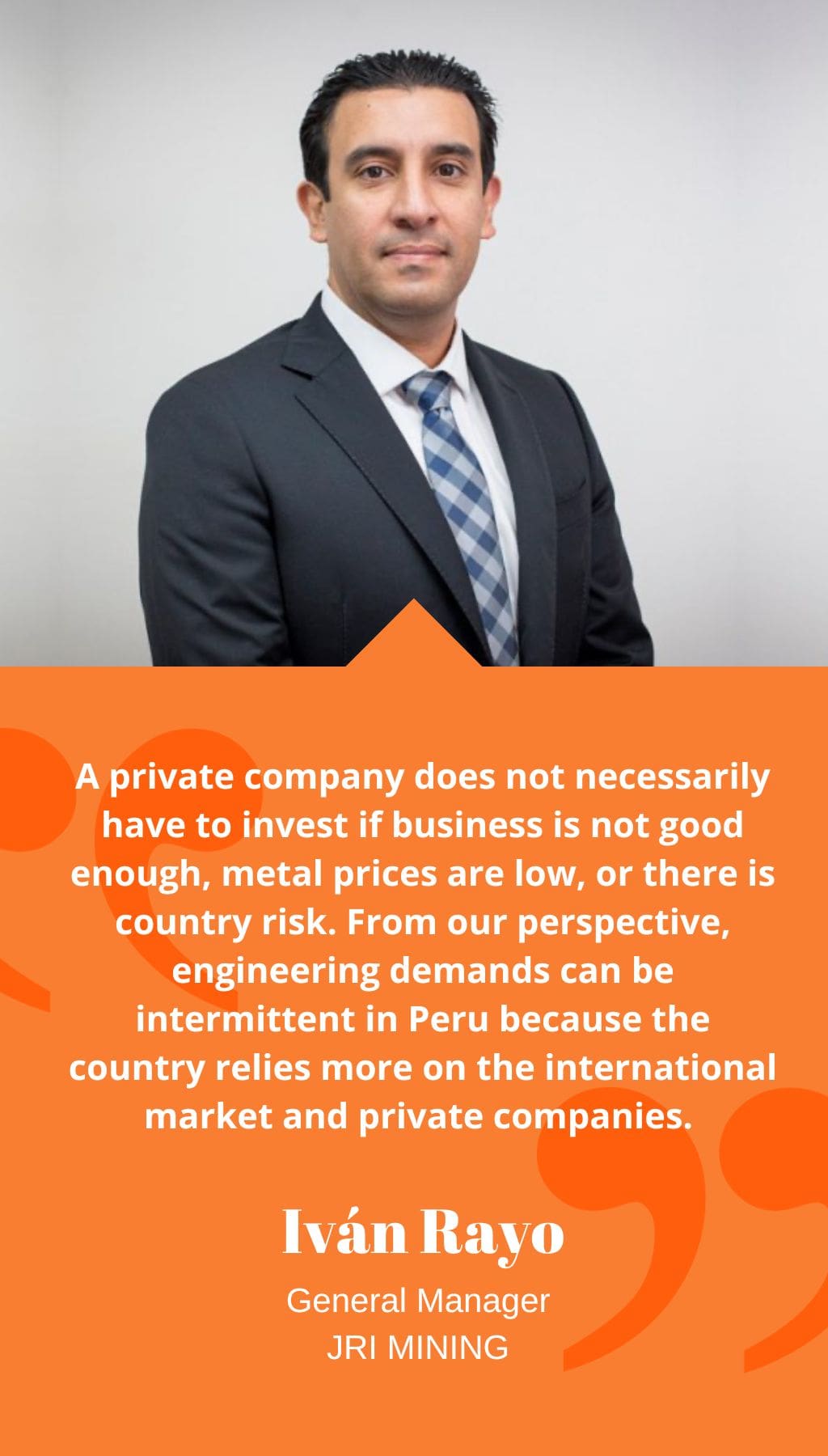
- Chile | 14 March 2022

Can you discuss how 2021 was for JRI and which of your company’s services were in high demand?
Certainly. 2021 was a great year for JRI, as we managed to meet our business goals despite the challenges that the industry faced both globally and locally. One of our key accomplishments was making progress on the engineering of Codelco’s Rajo Inca project. In addition, there were more value engineering projects in 2021 than in the previous year, including conceptual studies, optimization projects, and concentrate process debottlenecking. Many of these value engineering projects were transformed into long-term investment projects.
Regarding the Rajo Inca development, JRI has been involved in all of the engineering studies for the project since 2016. We began with the value engineering and conceptual studies with an integrated scope that included the mine, plants, tailing dumps, and infrastructure. We then moved on to the feasibility study and are now finishing the detailed engineering. Our team also supports the contracts of the operational teams, and as the only engineering company that has interacted with Codelco on this project, our participation is essential. We developed the project using modern work methodologies such as Lean Full Design, BIM 4D, and Advance Work Package (AWP).
Your company designs treatment plants, pipeline systems for water and mineral transportation, and tailings dams. Can you explain how these services help the sustainability of a mining operation?
JRI’s business is divided into four business units: plants, pipelines, dams, and underground mining. In each of these units, we not only address the design but also the sustainability component. We have a sustainability team at JRI that analyzes the environmental and community aspects, permitting, and social license to operate. Within JRI’s sustainability team, there are specialists for each of the business areas. For instance, sustainability issues in tailing dams differ from those in an underground mine. In order for projects to be approved, they must meet numerous requirements, including engineering, and we provide this service to help mining companies manage their core business.
What do you think are the primary differences between operating in Chile and Peru?
In Peru, there is no large state mining corporation like Codelco. Codelco is socially obligated to invest in maintaining copper production levels and accounts for over US$68 billion accumulated in Chile’s mining investment pipeline, more than 5% of all investment made in the country. A private company does not necessarily have to invest if business is not good enough, metal prices are low, or there is country risk. From our perspective, engineering demands can be intermittent in Peru because the country relies more on the international market and private companies. From a technical development standpoint, the two countries are very similar, which allows for synergies for engineering companies that work in both jurisdictions.
To what extent do you believe political changes in Chile could affect the country’s mining sector?
Royalty and regulatory decisions, such as those being discussed today in Chile, directly affect mining, and they impact the interest of international investors. For those of us operating in Chile, the concern is high because there is uncertainty. I have seen a certain animosity towards mining from some Chilean collectives that are anti-mining based on weak levels of information. They prefer to perceive dogmas rather than reality. As an industry, it is crucial for us to take action to demonstrate what is really being done and show Chilean society that mining is socially responsible and necessary for the country’s prosperity.














